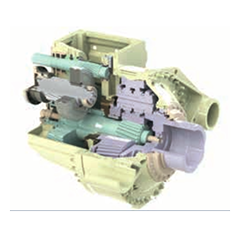America’s National Wind Technology Center has grown from a site for testing small turbines into the nation’s premier research facility for wind energy technologies, helping the wind industry grow with it. We take a look at its past – and its future.
On the plains south of Boulder, Colorado, nestled against the foothills, is the 305-acre National Wind Technology Center (NWTC), the nation’s premier research facility for wind energy technologies. The NWTC is a satellite campus of NREL and is located about 25 miles north of NREL’s main campus. It hosts four megawatt-scale wind turbines, two 600-kilowatt research turbines, and an assortment of small wind turbines. Its world-class structural testing laboratory and dynamometer test facilities draw wind turbine manufacturers from around the world.
But this impressive site grew from much humbler beginnings, in the days before a true utility-scale wind turbine market existed. NREL’s efforts grew alongside the wind power industry, first with testing capabilities and then with engineering solutions to many of the fledgling industry’s biggest technical problems. In some ways, NREL is the Johnny Appleseed of wind turbine technology: the lab planted the seeds of engineering and testing, and years later, wind turbines began sprouting up all over the country. Yet today’s blossoming industry was a distant vision in the late 1970s.
The early days
Shortly after NREL began operating as the Solar Energy Research Institute (SERI) in 1977, the current location of the NWTC became the site of a test facility for small wind turbines-the kind a homeowner, small business, ranch, or farm might use. Rockwell International originally operated the site, but SERI took over in 1984, testing the performance of new small wind turbines to assure potential buyers that the turbines function well.
“That role is still going on,” said NREL Wind Energy Research Fellow Robert Thresher. “There are two small turbines under test right now, and we’ve tested eight to 10 turbines over the past three to five years.”
Back when SERI started operating the wind test site in 1984, the utility-scale wind industry was in its very early years. Strong incentives in California were driving the installation of wind power facilities there some 10,000 wind turbines were installed between 1981 and 1985 – but the turbine designs of that era were prone to failure. To address that issue, the U.S. Department of Energy (DOE) funded the Cooperative Field Test Program, under which SERI researchers headed into the field to work with industry to improve the performance and reliability of their turbines.



























